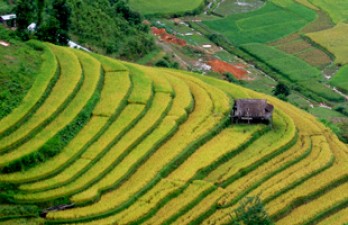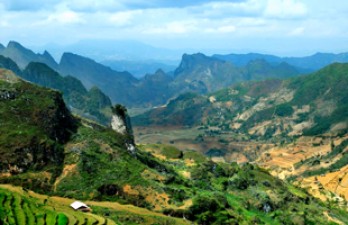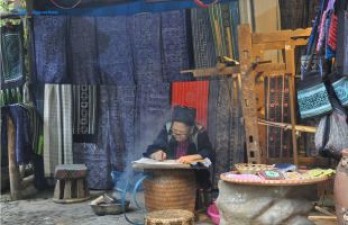Ethnic minorities in Sapa and their unique cultural beauty
2Traveling to Sapa, besides majestic natural scenery, you will also have a chance to learn about the cultural values, and the beauty coming from the people here. There are five ethnic minorities in Sapa: Hmong, Red Dao, Tay, Giay, and Xa Pho. Let’s explore Sapa through customs, costumes, and traditional festivals of ethnic minorities here with Handspan Travel Indochina!
Traditional costume of ethnic minorities in Sapa
Hmong people’s costume
Among ethnic minorities in Sapa, Hmong people make up the most significant number of people. The costumes of Hmong people are easy to distinguish from the costumes of other ethnic minorities in Sapa. Men often wear black or dark blue pants, short-sleeved blouses, and black or brocade embroidered hats. Whereas, Hmong women’s clothes have more sophisticated designs. Patterns embroidered on clothes are usually geometric patterns such as spirals, diamonds, squares, and rectangles. In terms of color, it is also quite diverse with many combinations of colors such as blue, black, yellow, and red. Hmong women do not wear skirts but wear knee-length shorts instead.
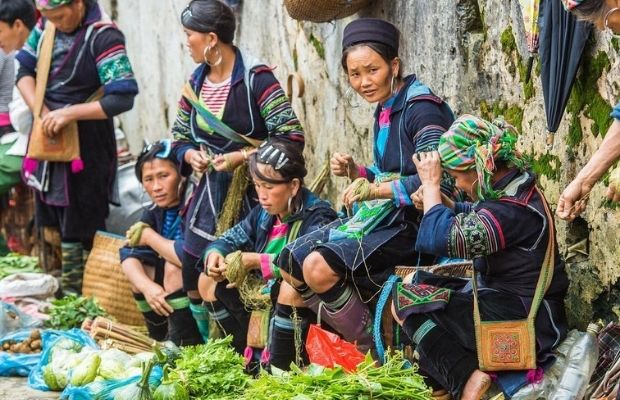
Hmong people in Sapa
Red Dao people’s costume
Red Dao people also account for the majority of the population of ethnic minorities in Sapa. You can recognize the Red Dao people through their clothes with red as the highlight color.
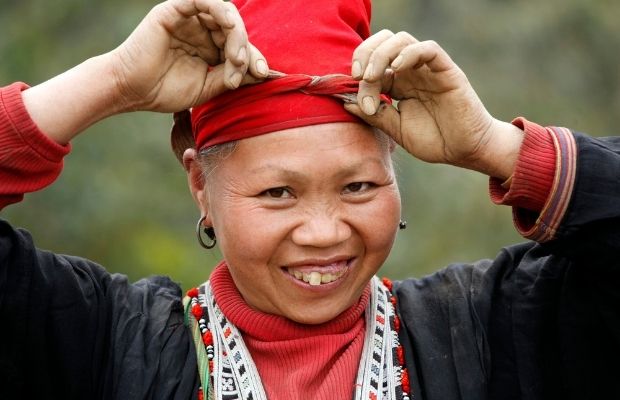
Red Dao people
A complete traditional costume includes a scarf, hat, shirt, pants, belt, and shin guard (xa cap). The sleeves, collar, and back patterns are meticulously embroidered with red, yellow, and white thread. These patterns include pine trees, tiger footprints, serrated shapes, etc. They are harmoniously and beautifully combined, highlighting the whole costume.
Tay people’s costume
Compared to the costumes of other ethnic minorities in Sapa, Tay people's outfits are plainer. Both men and women wear dark blue shirts with round collars, two pockets at the front sleeves, and a wide cloth belt wrapped around the waist.
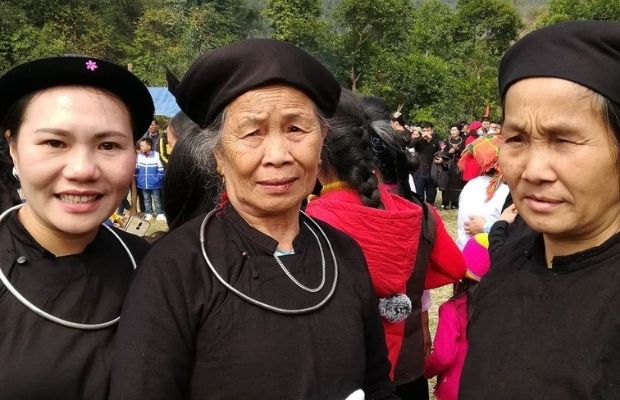
Tay people
Giay people’s costume
Giay is also an ethnic minority in Sapa that has simple costumes. They are less embroidered and only have colored fabrics around the collar and bodice.
Xa Pho people’s costume
Xa Pho people’s costumes are not only highly durable but also gorgeous. The shirt and skirt are made of cotton fabrics with different patterns and colors. The designs are simple but have Xa Pho people’s cultural value, including hills, pine trees, water flows, etc.
Traditional crafts of ethnic minorities in Sapa
Sapa has many traditional crafts preserved and developed by indigenous people from generation to generation. Below are some exciting traditional crafts of ethnic minorities in Sapa.
Brocade weaving
Brocade weaving is a craft of almost ethnic minorities in Sapa, from Dao, and Hmong to Tay. Until now, brocade products not only serve the daily living needs of local people, but they are also unique gifts reminding of Sapa.
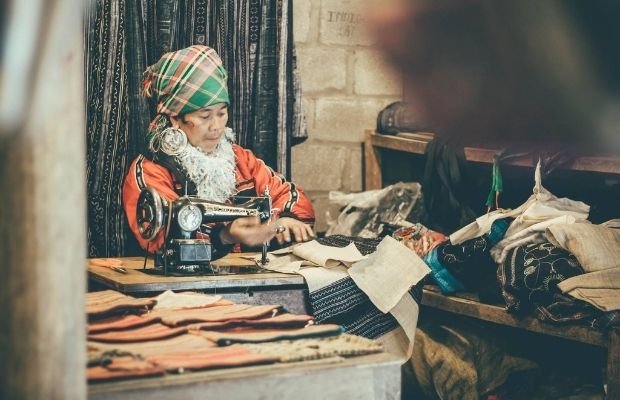
Brocade weaving in Sapa
You can drop in Lao Chai, Ta Van, Cat Cat, and Ta Phin Village to learn about the brocade weaving process. A sophisticated brocade product must go through many stages, requiring meticulousness, from peeling flax bark to stripping flax, plaiting yarn, weaving, embroidering patterns, dyeing indigo, etc.
Silver carving
Silver carving is also among the crafts of some ethnic minorities in Sapa. This craft requires skill, meticulousness, and experience passed down through generations.
There are many stages to having a carved silver product, from preparing tools to silver carving, including furnaces, crucibles, mold, hammers, iron pliers, etc. Silver products are diverse and rich in design, from bracelets, necklaces, and rings, to pins, chains, etc. Each type of jewelry has different shapes and textures.
Brocade embroidery
Besides brocade weaving and silver carving, brocade embroidery is also popular among ethnic minorities in Sapa, especially the Red Dao and Xa Pho people. For ethnic women, brocade embroidery is indispensable for serving themselves and their families. Ethnic girls learn embroidery since they are in primary or secondary school, from embroidery techniques to ways to select silk thread, fabric, and color mixing techniques.
Indigo dyeing and batik drawing
Visiting Sapa, you can easily catch up with black indigo clothes. Indigo dyeing, passed from generation to generation, is the symbol and the soul of the Tay and Hmong ethnic minorities in Sapa. Together with indigo dying, Batik drawing is also popular. Indigo dyeing helps the Batik patterns to be durable. Batik art uses beeswax to draw on the fabric before the fabric is boiled, the beeswax is melted, and vibrant and sophisticated patterns are revealed.
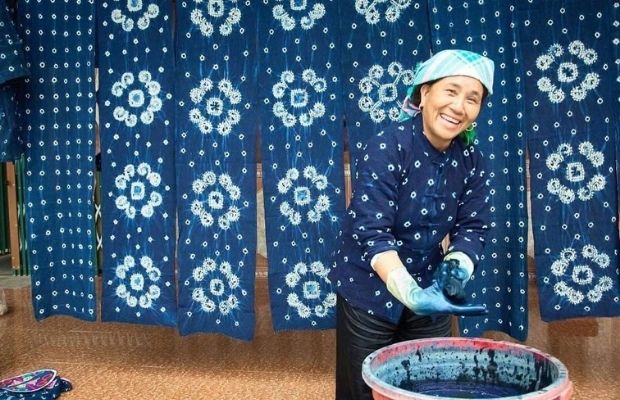
Indigo dyeing in Sapa
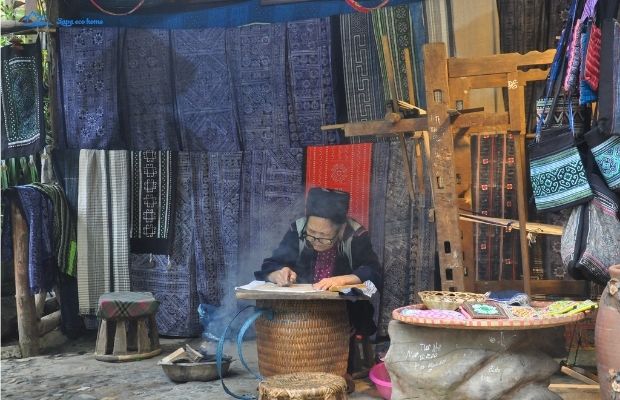
Beeswax drawing in Sapa
Bamboo and rattan weaving
Hmong and Tay people in Sapa use familiar materials like bamboo and rattan to make products and daily necessities. Under the skillful hands of craftsmen, these products are durable, beautiful, and suitable to use in daily life, such as bamboo baskets, sedge baskets, bamboo bags, rattan trays, paper boxes, jewelry boxes, flower vases, etc.
Now, it’s time for you to travel and learn the crafts of ethnic minorities in Sapa!
Traditional cultural festivals of ethnic minorities in Sapa
If you travel to Sapa during the festival time, you will have a chance to learn more detailed information about ethnic minorities in Sapa. Below are some traditional cultural festivals in Sapa you should refer to.
Hmong people’s Gau Tao Festival
Gau Tao Festival is a famous festival for the Hmong people. On the first day of the Tet holiday, it is held to pray for health, prosperity, good fortune, and a new year with bountiful crops. This festival is also an opportunity for the ethnic Hmong people to reunite with family after a long time of working far from home. At the Gau Tao Festival, you can see many attractive folk games of the ethnic minorities in Sapa, such as horse fighting, crossbow shooting, flute dancing, cock fighting, etc.
Red Dao People’s Tet Nhay Festival
Red Dao people's Tet Nhay Festival is held on the first and second day of the Tet holiday annually. Before the festival, the boys in the village will gather to practice dancing. Whereas, girls embroider new shirts, and prepare the most beautiful outfits for the biggest celebration of the year. After completing the rituals, Red Dao people will sing, dance, drink, and chat together in the bustling, warm, and close atmosphere.
Xa Pho people’s Village sweeping rite
The sweeping village rite of the Xa Pho people in Sapa is held in February of the lunar calendar. Local people hold it to drive away bad luck and wish for a peaceful new year, good crops, and livestock. After the ceremony, people in the village organize many games and parties until midnight. Thanks to its unique characteristics, Xa Pho people’s Village sweeping rite is indeed one of the featured festivals of ethnic minorities in Sapa you should join.
In conclusion, you have just learned some information about ethnic minorities in Sapa. Let’s come here and experience the Sapa ethnic people’s culture!
__logo.png)
__hanoi-water-puppets.jpg)
__angkor-wat-blue-reflections.jpg)
__vientiane-buddha-park-monks.jpg)
__bagan-dhammayazika-dusk.jpg)


